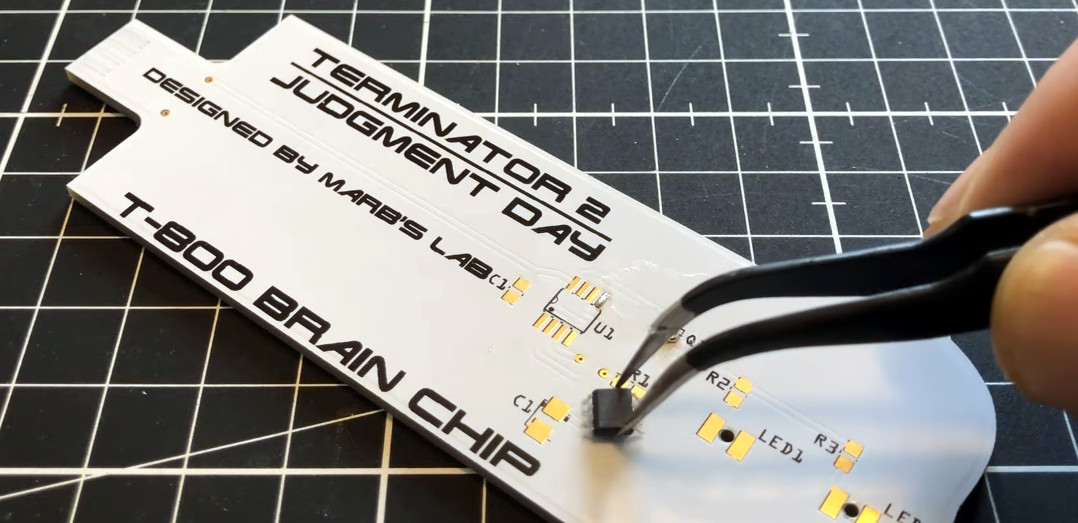In Terminator 2: Judgment Day it’s revealed that Skynet becomes self-aware in August of 1997, and promptly launches a nuclear attack against Russia to draw humanity into a war which ultimately leaves the door open for the robots to take over. But as you might have noticed, we’re not currently engaged in a rebellion against advanced combat robots.
The later movies had to do some fiddling with the timeline to explain this discrepancy, but looking at this 2024 Business Card Challenge entry from [M. Bindhammer] we think there’s another explanation for the Judgement Day holdup — so long as the terminators are rocking 555 timers in their chrome skulls, we should be safe.
While the classic timer chip might not be any good for plotting world domination, it sure does make for a great way to illuminate this slick piece of PCB art when it’s plugged into a USB port. Exposed copper and red paint are used to recreate the T-800’s “Brain Chip” as it appeared in Terminator 2, so even when the board isn’t powered up, it looks fantastic on display. The handful of components are around the back side, which is a natural place to put some info about the designer. Remember, this is technically supposed to be a business card, after all.
This build is a great example of several badge art techniques, which we think is worthy of a closer look even if you’re not personally into the Terminator franchise. While it’s far from the most technologically advanced of the entries we’ve seen so far, it does deliver on a design element which is particularly tricky to nail down — it’s actually cheap enough that you could conceivably hand it out as a real business card without softly weeping afterwards.
Remember, you’ve still got until July 2nd to enter your own creation into the 2024 Business Card Challenge. So long as the gadget is about the same size and shape as a traditional card, it’s fair game. Bonus points if you remember to put your name and contact info on there someplace…


















Surprise at the end of the video…
It activates Skynet?
No, Windows, which is just as bad.
Very nice artwork !!!
What’s the use of the extra transistor? The 555, also the TLC555 has some drive current itself.
It’s for the fade in/fade out effect. If you look at the schematic, the LEDs are not driven from the output of the 555 but from the RC node using the transistor as a buffer
The transistor Q1 is used together with the series resistor R1 and the capacitor C2 to generate blinking in a fading (glowing) manner.
To make painting of the PCB easier for larger quantities, I would suggest generating a mechanical layer using your PCB software and sending it off to get a stencil made. The stencil can then be used to mask off the sections which are not to be painted. Another option is to use one of the PCB services which do multi-color silkscreen.
Thanks for your tips. I’ve already thought about that. With the stencil, you could simply go over it with a paint roller or a scraper. I want it to look organic, like living tissue. Maybe you could also treat it with colored UV resin to enhance the 3-D effect.
It’s so flat…
As if it went through an hydraulic press !
LOL!
Amazing soldering skills.